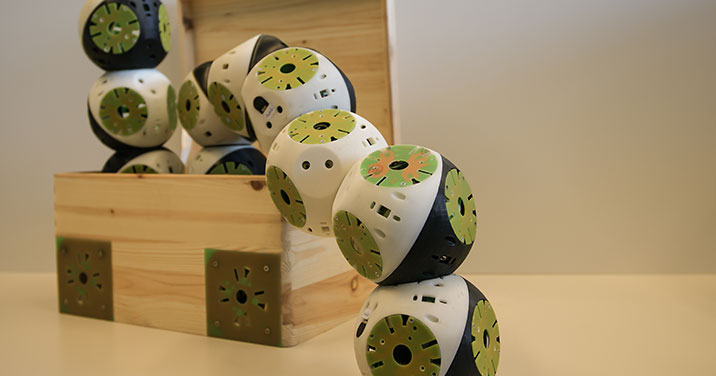
Roombots Could Transform into Different Household Furniture
If you like the idea of owning furniture (or more precisely, a form of robotic engineering) that could change its shape Transformers-style, shifting from a stationary chair one moment into a moving table the next (ideally with you not sitting on it when the change begins), you’ll be quite impressed with the work being done at the Biorobotics Laboratory at École Polytechnique Federale de Lausanne in Switzerland.
The team’s new concept for transforming furniture, called Roombots, has been accepted for publication in the July 2014 issue of Robotics and Autonomous Systems. The basis of the concept centers around the Roombot modules. Each module consists of 2 separately functioning blocks, which are connected via a central connection and motor, while each individual block also contains a separate motor. The blocks can then connect to each other, as well as the blocks on other modules through a number of connector panels on each block, which house clawlike connectors that emerge from the interior of the block to fasten unto another block as needed.
The result of all this flexibility in how the blocks and modules can function allows them to crawl over each other, pull themselves up, and swivel and contort in different directions, allowing them to quickly go from a series of separate modules on the ground into a fully connected shape or form. Also, because of the central motor and connection on each module, the blocks can turn in motion from that connector, allowing them to effectively move the entire construction and function as wheels.
In addition to the modules themselves, the concept also called for passive blocks or modules, which could essentially help fill out the construction of larger creations. The passive pieces would not have motors or any of the same functioning as the other modules, but would have the connectors to allow the robotic modules to grab ahold of and make use of them.
The team sees a lot of potential future applications for the concept, most notably in the form of assisted-living for the elderly or disabled. The concept would make their lives more convenient by being able to transport things around the living area, and providing many potential uses due to its flexibility and utility. As the team said, the potential uses would not be limited by their minds alone, but could be utilized in creative ways well beyond what they’re currently envisioning.
You can see video demonstrations of the Roombots in action like you’ve never seen furniture in action before, at the team’s webpage: http://biorob.epfl.ch/roombots. Don’t expect them too soon however. The team admits it could be many years yet before their concept turns into reality, due to the difficulty of constructing the robotic modules with the strength needed to carry out the task's it may be called upon to do, such as supporting an adult's weight.









